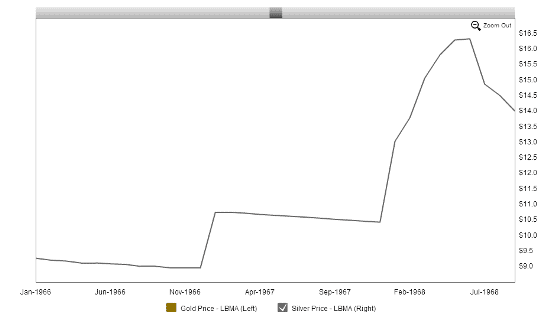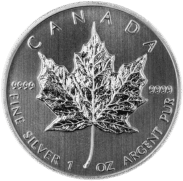At one point in time it was very common to see circulated silver coins. On January 2nd, 1908 when Canada opened its first Royal Mint in Ottawa, the “first coin” (half-dollar) was a silver coin (92.5% silver/7.5% copper). From then until the late 1960s, Canada, much like everyone else, produced silver coins, with exception to the penny (bronze) and the five cent (nickel). But the 1960s marked the death of silver currency coins. It wasn’t just Canada, but most countries around the world were making nickel or copper-nickel coins.
Seeing a silver coin nowadays is a treat. They have become collectible pieces where their numismatic (collectors) value and silver value are far higher than its face value. If you are lucky enough to come across one, we have written a great guide to help you understand how much your silver coin is worth.
But what happened in the 1960s? Where did all the Canadian silver coins go?
The beginning of the end of Canadian silver coins can be traced as far back to World War I. The reason for this is because the silver content in coins depended on the spot price of silver. Between 1908 and 1919, Canadian silver coins were made with 92.5% silver. However, after 1919 (the end of WWI), almost all Canadian silver coins contained 80% silver.
Looking at the graph below you can see that between 1914 and 1919 the price of silver jumped from $0.50/oz to over $1/oz.
In other words, the war’s affect on silver prices influenced Canadian silver coinage. Up until 1922, the five-cent coin was originally made with silver, but was converted to nickel (hence its name) to reduce the cost to make the coins.
Although silver prices dropped in the 1930s ($0.25/oz in 1932), this did not mean that Canadian coins would revert to 92.5% silver or that the five-cent coin would once again be made with silver. After the Great Depression and World War II, silver prices would begin to climb again, marking the next stage in the death of the Canadian silver coins.
The silver prices use the headline Consumer Price Index (CPI) with a base of January 2012
In 1968, Canadian silver coins would take another hit to their silver content, going from 80% to 50%. Once August rolled around, it became prohibitive to mint silver circulation coins, thus all circulation coins were made with nickel or copper-nickel. Overall, the rise in silver prices had some effect on limiting its use, not just for coins but also for manufactured goods. Not only was it more expensive to use silver in coins, but the demand from silver investors encouraged the metal to be allocated more toward bullion than secondary resources.
Since 1968, the only Canadian silver coins we see are either commemorative coins or bullion coins. The bullion coin—the Canadian Silver Maples (below; left)—are worth their weight in silver, whereas the commemorative ones, like the 1976 Olympic coins (below; right) are collectibles, and are worth more than just their silver value.
Although rises in silver prices killed Canadian silver circulation coins, they have also made them worth far more than their face value. For example, a 1950 twenty-five cent coin is worth roughly $2.50 today. That’s 100 times it’s face value!
Because of the long and complicated history of Canadian silver coins, determining the right price to sell silver coins at is tricky. Here at Canada Gold, we have years of experience accurately pricing coins, which comes backed by our best price guarantee for true peace of mind. If you want to talk about selling your old silver coins, contact us today!
Next time, we will talk more about the Canadian commemorative coins. If you have any questions, leave a comment.





